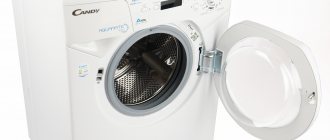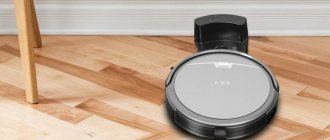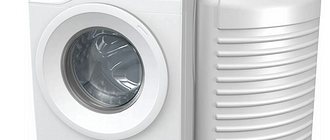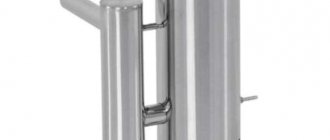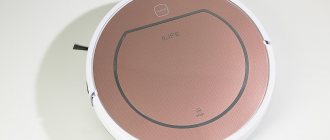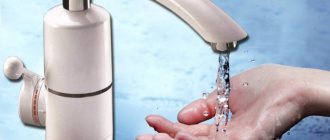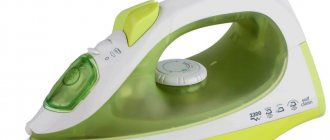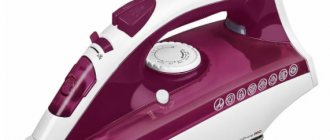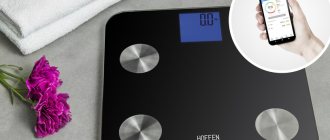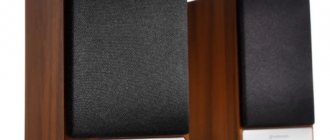It often happens that hot water somehow suddenly disappears. You came home from work, turned on the tap, and nothing happened.
And you need to put yourself in order. And the fuss with pots and running around with basins begins, a waste of energy and time.
If such situations happen frequently in your region or home, it’s time to buy yourself a water heater. In this article we will answer in detail the question: how to choose a suitable water heater for your home, cottage or apartment.
Page navigation:
Types of water heaters, their features, scope and main characteristics
Water heaters (depending on the method of heating liquids) are divided into 2 types: storage and flow-through.
It is better to give preference to models powered by electricity.
Cumulative
Storage water heaters always have a tank in which the heated liquid is stored.
As boiling water is used, cold water is poured into the container instead and gradually heated to the desired temperature. The supply is carried out through a mixer; cold water can be mixed in at the outlet. The tank volume can be anything: from very small (10 liters) to huge (150-200 l).
To speed up your selection, see:
- rating of storage electric water heaters;
- rating of storage gas water heaters;
A unit up to 100 liters can be attached to the wall, but those that are heavier are safer to install on the floor. Don’t rush to grab the largest tank, first calculate: how much hot water does your family need for a comfortable existence?
For dad, mom and two children, 80-100 liters per day is enough. 50-80 is enough for three (for showering and washing dishes). To take a bath, you will have to additionally turn on the heating. A tank with a volume of 150 liters or more allows you to use moisture with almost no restrictions.
Note! Storage water heaters are durable and significantly save energy, they can be connected to our usual 220 V sockets, they serve all water points in the home. Yes, and affordable.
Flow-through
The design of flow-through systems is quite simple: the water becomes hotter due to the operation of the heating element.
Its power can be different: from 3 to 27 kW. Units with ratings of 3-8 kW are only suitable for single-phase networks: this is important to remember! The output of boiling water ranges from 2 to 6 liters per minute.
Flow, in turn, are divided into pressure and non-pressure. The first ones are built directly into the riser and are able to provide boiling water to all water intake points. The second ones need to be installed closer to a specific water intake point.
Advantages! Instantaneous water heaters have many advantages - they are compact in size, they heat water in a matter of seconds (and heating is carried out only while you are using it, thereby not wasting electricity). But there are also significant drawbacks.
Firstly, a lot of electricity is wasted during heating, and secondly, since there is no mixing of cold and hot flows, the container often overheats and its operation is blocked.
In addition, such boilers are prohibited from being installed in old houses with “failing” wiring. The maximum permissible power of equipment for such networks is 2.5 kW (and even then, if all other consumers are turned off).
To speed up your selection, see:
- rating of instantaneous electric water heaters;
- rating of instantaneous gas water heaters.
How to choose a water heater?
Winter is approaching and many are already wondering whether everything is ready for winter, whether everything has been repaired, whether everything has been purchased, whether everything is prepared. It is a common practice for Russian people to remember winter when it has already arrived. It is not for nothing that many installation teams are now facing difficult times, since the season for installing various devices in country houses, and often in city apartments, is approaching. The range of equipment currently installed is quite wide: from small storage water heaters with a boiler volume of 30 liters per apartment, to boiler systems for a large country house. Today we decided to talk in more detail about choosing a storage water heater.
So let's start: First, you should decide whether you want to purchase a gas or electric storage water heater.
The advantages of gas storage water heaters are obvious, gas is a cheaper form of energy than electricity, and usually gas storage water heaters are usually more powerful than electric ones.
The disadvantage of a gas water heater is that it requires a centralized gas supply to the installation site of the water heater and sometimes very strict requirements for its pressure, which sometimes becomes unfeasible in country/country conditions.
An electric storage water heater is easier to use, but requires a more expensive energy source such as electricity. On the other hand, modern electric storage water heaters are fully automated and controlled by a microprocessor, have various economical modes, programs and can significantly save electricity when configured correctly.
For example, the DEC C series of storage water heaters from AEG has the ability to be programmed for main water heating at night, if necessary (preferential tariff, etc.).
Now let's look at the volume of the tank, sometimes called a boiler. The approximate required volume of the water heater tank can be calculated as follows: at the rate of 30 liters per person. That is, if 3 people permanently live in a house, then 3 x 30 = 90 liters. We take the first standard tank of approximate volume (preferably larger), this will be a water heater with a volume of 100 liters. This is exactly the calculation scheme offered in most online stores. But this diagram is very approximate, especially when calculating for a “shower”. Each person is individual and each has different concepts of “showering.” Some people can rinse off in 5 minutes, while others prefer to get wet for half an hour.
It can be calculated more accurately like this. The water heater heats water to approximately 55-85 degrees (depending on the brand and series); for human use, water needs a much lower temperature. That is, in total there will be more thermal water than the volume of the tank itself. You can calculate the volume of thermal water received by multiplying by a factor of 2-2.5 (if your water heater heats water up to 55, take 2, if up to 85, take 2.5). For example, for a 50 liter boiler heated to 85 degrees, warm water will be: 50 x 2.5 = 125 liters.
Next, you need to know what the water flow rate is for your shower head. Standard nozzles range from 4 to 8 liters per minute. If you don’t know the flow rate of your nozzle, you can find out by a simple experiment. Run water into the shower (with your usual pressure) and fill some dishes with a known volume, time the time during which it (the dishes) is filled. Well, then everything is easy to calculate. By the way, there are shower heads with a special economical mode, where the flow rate is set strictly to 4 l/min. A very useful thing, since you won’t feel much of a difference, but you will significantly increase your time in the shower.
Well, that's the end of the calculations. You know how much time you spend in the shower, and you know how much other residents of the apartment. We add up the time, calculate the volume of warm water, the volume of hot water and select the volume of the boiler.
For example and clarity, I will calculate a storage water heater for a family of 3 people (2 adults and 1 child).
So:
1st adult: takes a shower for 10 minutes.
2nd adult: showers for 18 minutes.
Child: we will take 15 minutes for a child to bathe in the shower.
Total amount: 10+18+15=43 minutes
Let's assume that the shower head has a flow rate of 5 liters/minute.
43 min. x 5 l. = 215 liters of warm water
We calculate the volume of hot water:
215 / 2.3 ~ 93.5 liters of hot water.
The nearest water heater volume is 80 and 100 liters. It is better to take it with a reserve and choose a 100 liter water heater.
Well, then the choice is yours. Company, series, etc.
Heating methods
Boilers can be powered by electricity, gas, or combined, combining both the first and second options.
Electric and gas are approximately equal in build quality, but have different price levels. To install a geyser you need a special project, registration, calling a specialist, etc.
Which one is more effective? Electric is safer and fiddling with the project is eliminated. However, if you turn off the light, you will not see hot water. Gas ones are compact, easily fit even in small spaces and are cheaper.
Indirect - more expensive than those described above, it is more difficult to install. But it is more economical (3-10 times), does not require a separate chimney or changes in the gas design, lasts a long time, and is convenient in a private home.
Combination water heaters have a reservoir in which liquid accumulates. Its temperature is maintained, so you always have a supply of boiling water at hand. They are inexpensive. Such models are usually large, heavy, their water supply is limited, and installation will require some effort.
How to choose a storage water heater by volume
To choose a storage water heater of the size we need, you need to know your family’s needs for hot water.
The first way to calculate the volume of a storage water heater
The table below shows how much hot water certain appliances consume per day for different numbers of people living: We are talking only about hot water - from a hot tap, and not a mixture of “hot + cold = warm”. The table is shown for hot water at a temperature of 60 degrees.
By summing up the numbers from the column, we get the consumption of hot water per day for our family. So, according to the table, for a family of 4 people you need: 30 + 100 + 120 + 250 = 500 liters of hot water per day.
The second method of calculating the volume of a storage water heater
There is an even simpler way - from practice and observation: you need 110 liters of hot water per person per day; Accordingly, we multiply 110 liters by the number of people living. For “our” family of 4 people: 110 * 4 = 440 liters of hot water per day.
In general, you can use both methods.
Attention! If your need for hot water, as in the example, is quite significant, DO NOT be alarmed: after all, this is a DAILY need! But there are two peaks in hot water consumption: morning and evening (on weekdays). That is, part of this water is consumed in the morning, part in the evening, and some during the day. So the entire volume can be divided into three, i.e. in the example above, the volume of the boiler needs two hundred liters or so.
Installation methods, features, in what cases which one is used
The installation method - floor or wall - depends on the model you choose.
What's the best way to install? It is best to install storage tanks closer to the risers with water: this way there will be good pressure and the length of the supply pipes will be significantly reduced.
If the tank is small, it can be mounted on any wall, but with a significant volume (more than 80 liters), only load-bearing partitions (brick, concrete) can withstand the load.
Suitable places:
- the space above the toilet (by installing a false wall, you will hide it and part of the communications, plus use the space rationally);
- above the bath (if its length is more than 160 cm, the tank will not interfere with you);
- under the kitchen sink (only for miniature water heaters up to 15 liters);
- under the ceiling in the hallway or corridor (here you must lay additional pipes and choose a horizontal boiler model).
Flow-through ones can provide liquid to a specific water supply point, so you can install it either in the bathroom or in the kitchen. It is important to ensure free access to the unit (in case of breakdown) and to prevent liquid from entering the housing itself.
IMPORTANT! Energy-conducting elements must be grounded to avoid emergency situations.
Tank inner lining
There are several types of coating, but the most reliable are stainless steel, plastic, glass ceramics and enamel (including titanium).
Stainless steel
Stainless steel is used in the most expensive equipment and is well worth the cost. Stainless steel is resistant to corrosion and damage, is not afraid of moving from place to place, shaking, and can be easily transported in any vehicle.
It is also not afraid of temperature changes: even if there is no moisture in the tank and the equipment overheats, the container itself will not be damaged.
The owner will need to replace the heating element, but this part is clearly cheaper than the tank itself. The warranty period for water heaters coated with stainless steel is long - from 7 to 10 years, but this is only a guarantee, and the service life can be counted in decades!
What can we say about the shortcomings?
- First: despite the anti-corrosion properties, in some cases this scourge cannot be avoided. Namely: seams can oxidize if old technologies were used in the manufacture of the model.
- Second: cost. The stainless steel model costs several times more than any of the ones described below.
Glass ceramics and enamel
Glass ceramics and enamel cost less than others. These coverings are interns, i.e. They are not afraid of many chemicals (except for the most aggressive ones).
And they are easy to clean: a few drops of any detergent, a sponge or brush - and the job is done. But that’s where the advantages end, alas.
The list of "cons", unfortunately, is longer.
- Firstly, the problem of weak adhesion between the metal of the tank and the coating often arises.
- Secondly, due to frequent temperature changes, a simple ceramic coating quickly begins to crack and peel off from the walls (the guarantee for such tanks is given for 1 year).
- Thirdly, the fragile ceramic coating is easy to break. And finally, fourthly, old models, the walls of which are covered with self-leveling enamel (these were produced about 20 years ago), contain particles of hazardous substances (lead and arsenic) that are dangerous to the human body.
Titanium enamel is a lightweight material, but rare (you still need to look for models with such a coating). It is resistant to corrosion and chemicals, allowing the tank to operate at very high temperatures.
In this case, there is no danger of peeling or cracks in the coating. However, the areas of welding joints are the most vulnerable, and this is where corrosion often appears. Water heaters with titanium coating are expensive.
REFERENCE! Plastic tanks appeared relatively recently and it is too early to talk about the established practice of their use. The guarantee is given for 5-10 years. Pros: do not oxidize; do not react chemically with liquids; do not affect the quality of the liquid. But for all that, they are very fragile.
Which tank coating is best?
The following coatings are used for the water heater tank:
- glass porcelain - the warranty is usually 1 year. The material is cheap, does not corrode, but is very sensitive to temperature changes. That is why it can become overgrown with microorganisms and spoil the quality of water.
- enamel - guaranteed service life from 3 to 5 years. Various materials, such as titanium, can be added to the enamel. Ariston has the highest quality enamel tanks.
- stainless steel - service life can reach 20 years. The material maintains water hygiene and is not subject to corrosion.
Based on the above, the best option for a water heater would be a tank with an internal stainless steel lining. Such a device will serve for a long time without interruption.
Types of heating element, features, pros and cons
Heating is carried out by a heating element: it can be a “dry” heating element (not in direct contact with water) and a “wet” heating element.
REFERENCE! TEN - tubular electric heater.
Wet heating element
“Wet” heating element is also called “open”. It is a tube—steel or copper—within either quartz sand or magnesium oxide.
The base is nichrome wire. This additive transmits heat well. The configuration is classic; replacing group parts is quite simple.
According to the type of fastening, they can be flanged (stamped or cast) and nut; or an anode socket, or additional fasteners on the flange; be straight or curved. Such heating elements are easier to maintain, more practical, and cheaper.
Dry heating element
In a “closed” (“dry”) heating element there is a ceramic, very durable flask, inside of which a heating device is hidden. The enamel applied to the surface of the flange and the internal walls of the tank saves the device from scale and has anti-corrosion properties.
Advantages
- Such elements have many advantages: they heat water very quickly and are inexpensive.
- The heating element is very easy to replace, and there is no need to even drain the water from the tank: unscrew the flange from the “socket” and insert a new one.
- Due to the special coating (vitreous enamel), the risk of scale formation and corrosion is minimized.
Flaws
Disadvantages: the security level is low, which is alarming. If the water entering the tank is of poor quality, the service life of the part will be reduced. In addition, if scale accumulates on the surface of the heating tube, more electricity will be wasted.
Ten+ of the best water heater models in 2021
10+. Timberk WHEL-7 OC
This is one of the most compact models presented in this rating. The water heater is equipped with a streamlined and absolutely protected body. With its help, you can completely provide water to one point of consumption.
This is a flow-type device, the heating element is made of copper coated with protective agents, which allows you to extend its service life. It is also equipped with a hydraulic valve, which has a shut-off sensor. It works when the water is turned off. The flask is made of thermoplastic with stiffening ribs and thickened walls.
Advantages:
- Quickly heats water to the required temperature;
- Flow-through;
- Has compact overall dimensions;
- Convenient to use;
- Simple settings system;
- Low cost.
Flaws:
- Heating elements need to be replaced after three years of service - this is their declared service life.
Timberk WHEL-7 OC
Electrolux NPX6 Aquatronic Digital
This is one of the widespread models of instantaneous water heaters. It has good performance - it can produce about 3 liters of hot water per minute, and consumes a small amount of electricity - only 5.7 kW. This is one of the most economical indicators in its class. High-quality materials are used in production, which ensures a long service life of the device. The design can distribute water to several points. The electronic control system is quite convenient. It has several temperature setting modes.
For greater convenience, this device is additionally equipped with a digital display. The water supply is carried out from above, which is not always convenient when connecting, especially if the pipes approach from below. The water heater works efficiently - it produces hot water at the required temperature at any pressure, and has small overall dimensions.
Advantages:
- Small dimensions;
- Availability of digital display;
- Fast heating of water to specified values;
- Ease of use - you just need to set the temperature; during operation there is no need to adjust the pressure;
- Small dimensions;
- Reasonable price.
Flaws:
- The power is not enough to heat water to a high temperature;
- Requires laying a separate line from the electrical panel;
- It happens that the automatic switching system does not work, you have to start it with a button.
Instantaneous electric water heater Electrolux NPX6 Aquatronic Digital 2.0
Thermex Flat Plus Pro IF 50V (pro)
Reliable and durable products that are capable of providing users with running hot water throughout the entire period of operation. The volume of the storage tank is 50 liters, and the product is equipped with an electronic control system, so the required operating mode can be selected in just a few seconds. The device is equipped with a functional liquid crystal display, so the user can monitor in real time the processes occurring in the water heater, calculate errors and their type, and so on. The product is characterized by the presence of an original accelerated heating function, which allows you to obtain the required volume of hot water in record time.
More: Top 10 best soft tiles, how to choose the best soft tiles?!
The anode is made from a special magnesium alloy, which is highly resistant to corrosion processes inside the storage tank. It is possible to automatically diagnose the device, so the water heater will immediately notify the user about an error that has occurred. The body is produced using optimal Double Tank technology. It has a flat shape and takes up a minimum amount of free space, so it can be placed even in limited space. The device is characterized by reliable thermal insulation between the body and the storage tank - this allows not only to significantly speed up the heating of water, but also to reduce energy consumption, since the water in the tank will cool quite slowly. If necessary, the device can be placed even in an unheated room - it has a No Frost protection mode.
Advantages:
- Excellent quality of materials and workmanship;
- There is a function for very fast water heating;
- Mounting on the wall is simple and quick, and all the elements necessary for installation are supplied included;
- There is a frost protection function.
Flaws:
- Water heating is turned on when the temperature in the tank drops by 8 degrees from the set one, and this parameter cannot be adjusted;
- Temperature settings are not saved when the power is turned off;
- As water is consumed, its temperature drops very quickly.
Thermex Flat Plus Pro IF 50V (pro)
Electrolux NPX 8 Flow Active 2.0
Another model with an electronic control system, but this one is of an improved type. Thanks to it, it is possible to maintain constant heating of water within specified limits both at the inlet and outlet, which helps to avoid increasing or decreasing the temperature limit in the event of pressure surges in the system. The device has a high-power heating element, which is made of stainless steel with a special coating. It is equipped with good protection against scale formation and overheating. The water heater itself is characterized by compact overall dimensions, and the housing has an increased degree of protection from dust and moisture penetration - it complies with the IP X4 standard. The design of the device is attractive, so it can even be installed openly if necessary.
The degree of productivity is high - the device is enough for three water points, and the volume and degree of heating will be enough even for taking a full bath. Automatic switching on and off. The control system is intellectually simple. The water heating range is from 30 to 60 degrees. Overheating is completely eliminated by installing a special sensor.
Advantages:
- Easy to adjust all parameters;
- High power level;
- Attractive appearance;
- Compact overall dimensions;
- Reliable protection against penetration of moisture and dust under the housing;
- Carefully executed thermal insulation.
Flaws:
- It is necessary to lay a separate cable from the electrical panel;
- The input mains voltage drops a little.
Electrolux NPX 8 Flow Active 2.0
Thermex Champion Silverheat ERS 50 V
One of the most advanced round electric heaters. The device is characterized by a high level of reliability and durability. First of all, I would like to say about the internal coating of the storage tank - it is bioglass fiber. By and large, this turns the device into an analogue of a glass jug, which is an ideal container for storing large or not very large volumes of water. Such a coating allows you to solve two problems at once: firstly, the quality of the coating and the degree of its density reliably protect the inner surface of the tank from the occurrence of corrosion processes, protecting it even from serious temperature changes. Secondly, such a tank allows you to keep water fresh and clean for a long time, and prevents the formation of an unpleasant odor.
The heating element is made using the original SilverHeat technology. It is resistant to the formation of lime deposits and scale, and can work for a long time even with active use for a long time. Another important point is the creation of an antibacterial effect inside the storage tank. All these factors ensure long-term and stable operation of the water heater: the tank is given a long warranty, which lasts for as long as 5 years. The internal thermal insulation is made of high-density polyurethane foam, due to which the water cools for a very long time. The control is mechanical, but the display is LED. The device is equipped with all the necessary protection systems, which can significantly extend its service life.
Advantages:
- Low weight and overall dimensions;
- Reasonable cost;
- Internal coating with antibacterial characteristics;
- You can limit the heating temperature and its range;
- Stable operation of the safety valve.
More: Multicooker Hyundai HYMC-1611 – full review of the multicooker
Flaws:
- You should not leave the storage tank empty - otherwise the enamel will begin to dry out.
Thermex Champion Silverheat ERS 50 V
Stiebel Eltron DDH 8
This unit is used for both one and several water points, which allows the heater to be used in the summer, when there is a widespread shutdown of hot water in apartment buildings. If desired, the device can be installed even in a country house or cottage. The overall dimensions are small - only 360x200x104 mm, so the device can be placed in a small room. The product is simple and reliable: water is supplied under pressure ranging from 0.6 to 10 atmospheres. It enters the system through a flask equipped with a tubular heater made of copper. The material resists the formation of lime deposits well. The productivity is decent - 4.1 liters per minute. Operating parameters can be adjusted using a standard mixer.
The heater has a heat limiter that will protect the user from burns. There is also additional protection provided by special sensors. If overheating occurs, it automatically turns off the device and prevents it from burning out. The water heater complies with the IP24 electrical safety standard, so it can be installed even in rooms with high humidity - kitchen, bathroom, shower room, and so on. All necessary fasteners are supplied in the kit.
Advantages:
- Heats water almost instantly;
- Compact overall dimensions;
- Attractive appearance;
- A power regulator is provided;
- Long warranty period.
Flaws:
- Decent electricity consumption;
- Increased power levels require a separate line from the shield;
- The water inlet and outlet are made of plastic, so they are quite flimsy.
Stiebel Eltron DDH 8
Electrolux EWH 50 Royal Silver
This water heater has an interesting design - the body is painted silver, has a flattened shape, so it can be installed in a small niche, where it takes up almost no free space. It is fixed directly to the wall, the supply pipe is connected to the bottom. The tank can hold up to 50 liters of water. The heater has a power of 2 kW, and there is a magnesium anode in the tank, which will reliably protect the device from scale. A safety valve is supplied with the boiler, since the product is designed for a maximum pressure in the system of 7 atmospheres. The design has two power modes; the heating temperature is selected using a small rotary control.
Advantages:
- Works absolutely silently;
- It has a beautiful appearance;
- Quickly heats water to the set temperature;
- Economy mode available;
- There is a protective shutdown device.
Flaws:
- Automation sometimes does not work;
- The tank does not hold temperature very well, which is why the heater turns on quite often.
Electric storage water heater Electrolux EWH 50 Royal Silver
4. Electric storage water heater Thermex Praktik IRP 100 V
It is rightfully ranked 4th in the list of best storage water heaters in 2021. It is equipped with a rounded body made of plastic combined with metal. The heating tank itself is made of stainless steel with a special internal coating that extends its service life. The volume is significant - 100 liters, maximum operating power - 2.5 kW. There are 3 power levels available. The highest water temperature is 74 degrees. The device comes with a safety valve; the boiler has protection against power surges, power outages, leaks, and so on.
Advantages:
- Reliable assembly, only high quality materials are used in production;
- The body is made of impact-resistant plastic and has thermal insulation from the inside;
- The temperature is regulated smoothly and maintained at a given level for a long time;
- The buttons are backlit;
- Does not make noise during operation.
Flaws:
- It is necessary to securely fasten it to the wall surface, since when filled the heater will weigh a lot;
- Big sizes;
- The design does not provide a display.
Electric storage water heater Thermex Praktik IRP 100 V
Electrolux EWH 100 Formax DL
This model in the ranking of the top 10 best water heaters is in an honorable 3rd place, slightly inferior in its functional characteristics to the leader. The brand speaks for itself - the products manufactured by this Swedish company are easy to use and reliable.
The tank capacity is 100 liters, the maximum operating power is 2 kW, and it can be adjusted to save energy. The inside of the tank is enameled and made of stainless steel. The water heater can be installed either horizontally or vertically. The device is equipped with two heating elements - the power of the first is 0.8 kW, the second - 1.2 kW. Both of them do not come into contact with water; if one of them fails, it will not affect the operation of the water heater in any way. The design includes an electronic panel that facilitates control.
More: TOP 10 best alkyd paint manufacturers
Advantages:
- High capacity;
- The tank and body are made of durable materials;
- Foamed polyurethane is used as thermal insulation;
- The inner surface of the tank is protected by the Protect Tank system, which uses glass enamel and anodized magnesium;
- It is possible to accelerate water heating;
- A protective shutdown device is installed on the power cable, protecting the water heater electronics from power surges.
Flaws:
- Continuous heating of water if accelerated heating is inactive;
- High price;
- Even without filling with water, it weighs a lot - 31 kg, which complicates installation.
Video review of water heater Electrolux EWH 50 Formax, Formax DL 30,50,80 and 100 liters
Electrolux EWH 100 Formax DL
Atlantic Vertigo Steatite WiFi 80
Boiler from the French company Atlantic. This is the only brand of water heaters on our market that does not have production facilities in China. That's why Atlantic is called the most UN-Chinese water heaters.
A special feature of the model is a Wi-Fi module; the device can be controlled via a mobile application. Including setting up work schedules and tracking energy consumption.
The main feature of Atlantic water heaters is a patented development: a “dry” steatite heating element. It does not have direct contact with water, heats effectively and retains heat for a long time. There is almost no scale formation, so the boiler is durable and operates quietly. It is necessary to rarely change consumables - the heating element itself once every 20 (!) years (for comparison, ordinary “wet” heating elements last 3-4 years), its protective flask once every 8 years, and the magnesium anode - once every three years. As a result, an Atlantic water heater costs about 5,500 rubles, which is three times cheaper than a boiler with a “wet” heating element.
Advantages:
- “Dry” steatite heating element (3-4 times less scale than “wet” heating element);
- The tanks have a flexible coating made of enamel with an admixture of zirconium (microcracks do not form, there is no contact with water, so there is no rust even on welds);
- Control from a smartphone;
- Boost fast heating function;
- Up to 8 years warranty on tanks (usually manufacturers give a 5 year warranty).
Flaws:
- The weight of the device is more than 30 kg.
Atlantic Vertigo Steatite WiFi 80
1. Electric storage water heater Zanussi ZWH/S 50 Symphony HD
This is one of the few designs that is equipped with a special valve that allows you to relieve excessive pressure. It is installed on the cold water supply pipe in front of the tank itself. The outlet from it is connected to the sewer. The device is placed vertically using a rigid, inflexible bar, which will easily support the weight of both the heater itself and the water in the tank. It is quite easy to regulate the temperature of the device; the temperature ranges from 30 to 75 degrees. The water heater is equipped with an economical mode; even when using it, you can get hot water in just an hour. The model does not have a residual current device, so ideally it should be connected via a separate line. The design is small in size, economical, and comes with a 5-year warranty.
Advantages:
- The inside of the water tank is coated with finely dispersed enamel, which ensures its reliable protection against rust;
- Easy to use at home;
- Attractive appearance;
- Assembly reliability.
Flaws:
- The hot water supply tube fails after about 5 years of service.
Electric storage water heater Zanussi ZWH/S 50 Symphony HD
Video review of storage water heater Zanussi ZWH/S-30,50,80, 100 Symphony series
Tank (boiler) shape
You can choose a design based solely on your own taste preferences, but you shouldn’t forget about the practical side of the issue.
A rectangular (flat) unit is more convenient to install in the kitchen: usually, even without it, it is heavily overloaded with various useful elements - there may be a dishwasher, an extractor hood, a hob, and a microwave oven - so compactness is important here.
It’s easy to squeeze a boiler between hanging cabinets, for example. In a private house there are also more conditions for this form of device, but the communications route will still have to be laid.
Round tanks are usually larger in volume - up to 500 liters (flat tanks - no more than 100) and are placed the same way: taking into account free space.
Installation features
Installation also depends on what type of model: horizontal or vertical.
Structurally, they differ significantly from one another, and a vertical boiler cannot be hung horizontally and vice versa!
Liquid enters a horizontal water heater through the lower pipe, and through the upper pipe boiling water comes out under pressure into the hot water tap. With active water intake (due to increased mixing of water with temperature differences), the temperature of the already heated liquid will drop faster.
The vertical one works somewhat differently: here the contact of cold and hot water is significantly reduced, and the diffusion process is slowed down. The consumer also receives more boiling water due to the divider installed at the bottom, which does not allow cold water to shoot upward, but directs the stream downward, thereby preventing the temperature of the moisture from rapidly decreasing.
REFERENCE! Vertical-horizontal models are available for sale. According to the manufacturers, they can be hung this way or that way. But, as practice shows, the operating principle of such models is closer to horizontal. Is it worth overpaying?
Boiler control system, features, pros and cons
Control systems 2: hydraulic and electronic.
Hydraulic
The operating diagram of the hydraulic mechanism is simple: there is a block with a rod and a membrane inside. The membrane moves, the rod moves, the switch pushes, and the power stage is turned on (depending on the pressure). As soon as the tap closes, the device also turns off.
IMPORTANT! There can be 1 or 2 power levels. More often on sale you can find models with one and 6 kW. Remember: if the water flow is weak, the heater may not turn on at all.
Disadvantages of hydraulic models: there is no protection against air ingress; They cannot maintain a certain temperature for a long time.
Electronic
Electronic control is carried out using special sensors and microprocessors: they are responsible for both the heating power and the liquid pressure. There are 2 types of models with this control on sale:
- in some models, the required temperature regime can be set and adjusted using indicators and keys;
- other ways to not only monitor the temperature yourself, but also control the flow of water.
Boilers with an electronic control system are suitable for any type of housing. Disadvantages: they are expensive, and if any electronic module breaks down, the entire control unit will have to be replaced.
Main types of boilers
Electric water heaters differ in the type of heating:
- flow-through;
- accumulative;
- combined.
Advantages of electric water heaters:
- durability;
- noiselessness;
- ease of use;
- long service life.
Instantaneous electric water heaters
The design of the flow-through device is such that the temperature of the water passing through the water heater increases due to the operation of the heating element. Its power ranges from 3 to 27 kW. Devices with a power of up to 8 kW are designed for a single-phase network. The hot water output ranges from 2 to 6 l/min.
Instantaneous water heaters are divided into pressure and non-pressure. The first ones are built into a riser and provide hot water to several water points. Non-pressure devices are installed as close as possible to the point of water collection. The outlet is a tap or watering can on a flexible hose.
An instantaneous electric water heater is the most common and effective way to produce hot water.
The instantaneous water heater control system can be hydraulic or electronic. Devices with a hydraulic control system are equipped with a flow sensor, while devices with an electronic control system are equipped with a microprocessor. The former are not capable of increasing the water temperature by several tens of degrees, i.e. in winter it will be warm, not hot. Electronic devices maintain the set temperature.
Advantages of instantaneous water heaters:
- compact;
- instant water heating;
- heating only when water is used, when it is not needed, no electricity is consumed;
- water always enters the tap hot (in storage boilers, during continuous use, its temperature gradually decreases due to the entry of a new portion of cold liquid into the tank and prolonged heating).
Flaws:
- Due to its high power, the device consumes a lot of electricity.
- Instantaneous boilers overheat due to the fact that hot water does not mix with cold water. As a result, their work is blocked for a certain period and cold water begins to flow from the tap.
- A high-power device cannot be installed in old houses because the wiring in them is not designed for such high power. The maximum power of equipment for a house of this type is 2.5 kW, taking into account the fact that other consumers will be disconnected.
- When the power goes out, they immediately become useless.
- The outlet water temperature depends on the inlet water temperature.
Storage electric water heaters
A storage boiler differs from a flow-through device by the presence of a container for storing heated water. When hot water is consumed from the tank, cold water takes its place, which also heats up. From the boiler, water flows into the mixer. Cold liquid may be mixed with the hot liquid at the outlet.
Storage tanks vary in volume: from 10-30 l to 150-200 l. Tanks up to 100 liters are mounted on the wall. More voluminous ones are installed on the floor. Such devices are suitable for continuous use.
Before choosing an electric storage water heater for an apartment, home or cottage, you need to calculate the required volume of water for your family.
For one person, a 50-liter tank of hot water (it is mixed with cold) is enough for water procedures. Here are some approximate calculations:
- 15 l - for washing dishes.
- 50-80 l - for a family of 3 people to wash dishes and take a shower. You can also fill the bathtub if you wait for reheating after washing each family member.
- 80-100 l - approximately this amount is required for 4 people. The water in such a boiler takes longer to heat up.
- 100-150 l - the volume of water is enough for 5 people. You can take a bath.
- More than 150 liters - this volume allows you to use water with almost no restrictions.
Before choosing a storage electric water heater, you need to calculate the amount of water for your purposes.
Advantages of boilers:
- durability;
- energy savings (compared to flow-through models);
- maintenance of all water points in the apartment;
- connection to a 220 V outlet;
- affordable price.
Combined water heaters
They differ in that they can operate in two modes: flow and storage. First, heated water is consumed, and if this volume is not enough, the flow heating device is turned on. There are a limited number of options of this type on the market. The most common boiler is Stiebel Eltron SHD.
Additional important functionality
- A layer of thermal insulation for storage models is not a whim, but a necessity. It helps the water stay warm longer. The instructions indicate what kind of insulation and what thickness was used by the manufacturer. The more expensive the unit, the thicker it is: 40-50 mm versus 10-20.
IMPORTANT! The ideal layer is 70 mm. You can insulate the boiler yourself, using soft or hard insulation, or spraying polyurethane foam sealant and foam.
- High-quality units always have overheating protection installed. When approaching a critical point, special sensors turn off the boiler.
- A timer is needed to program the time to turn on and off water heating. Will help you warm up the liquid before you wake up.
- IP stands for Ingress Protection Rating and indicates the degree of security of the device. It is written in the characteristics of the device in the form of two numbers - two degrees. The first shows the user the degree of protection against dust, the second - water. The degree is indicated from 0 to 8, where 0 is no protection, and 8 is the strongest protection (at which even a long stay of the device in water will not harm it).
Popular manufacturers
- Zanussi is an Italian brand, a leader in the field of inexpensive models. It produces both instantaneous and storage boilers (electric, few gas). There are practically no complaints about quality; the devices last a long time, are economical, and well assembled.
- Ariston is another one of the world leaders, this time Italian (sales are carried out in 150 countries). A wide range of both gas and electric models of different sizes. Thermal insulation is one of the best. Silver ions are actively used to protect water. But there are no “dry” heating elements.
- Thermex is an international corporation that produces electric models. The range is wide: there is a choice in terms of power, tank volume, and type. Lots of innovations, long warranty period, easy installation and management. Magnesium anode and biological glass porcelain are used. However, users often complain about leaks.
- The Slovenian company Gorenje produces not only stoves, but also electric storage water heaters, geysers and indirect heating devices. Stylishly designed and compact models are popular in 90 countries. Thermal insulation is high, there is protection against freezing. Savings are obvious.
- about the manufacturer BOSCH . The model range is wide, different installation options are provided, and the ideal price-quality ratio. Convenient and very attractive in appearance, water heaters fit into any interior, serve impeccably and for a long time. There is one “but”: the build quality in Russia and China is noticeably “lame”.
- Baxi is an Italian classic. There are both flow-through and storage models. Wide choice of performance, design, shape, volume. New products are released regularly. The equipment is affordable and made from quality materials. But management is not convenient for everyone.
- In addition, we can highlight several more popular companies (following the links are ratings of models from these manufacturers): Atlantic;
- Atmor;
- Electrolux.
Boiler inner lining
Water heater tanks are made of metal. Metal corrodes when it comes into contact with water. Therefore, tanks are either made from materials that are not subject to corrosion, or are coated with a special coating. The coating is:
- Plastic - the most inexpensive, but also unreliable.
- Glass-ceramic - good and budget-friendly.
- Enamel - low-quality coating quickly cracks and chips, but manufacturers strive to increase service life by adding additives to the composition. But it also peels off after some time.
- Titanium is a reliable, but also the most expensive protection against scale.
Sometimes silver ions are added to the coating composition, which disinfect the water.
In addition, the tank can be made of stainless steel, in which case there is no need for a protective coating. Such tanks are guaranteed for 10 to 12 years. However, there are still weak points - these are the welds, which are the first to corrode.
